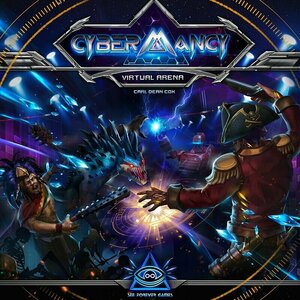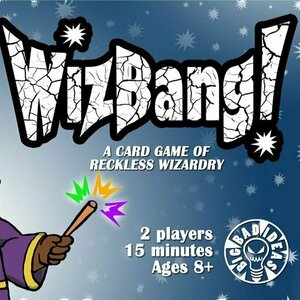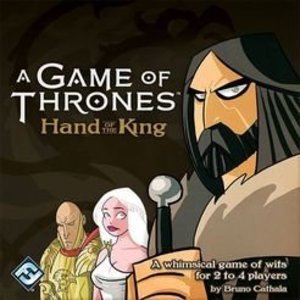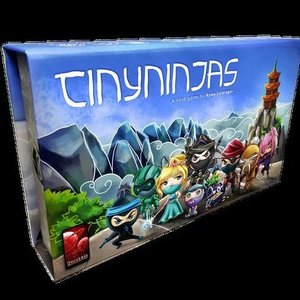Search
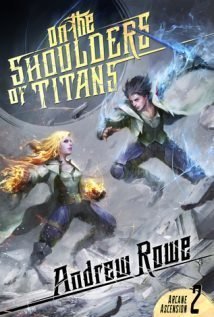
On the Shoulders of Titans (Arcane Ascension Book 2)
Book
Corin Cadence finally has a firm reason to believe his brother, Tristan, is still alive. ...
Cadence Visages dueling attunements Judgement Spires
RO
Reading Orientalism: Said and the Unsaid
Book
The late Edward Said remains one of the most influential critics and public intellectuals of our...
Heather Cranmer (2721 KP) created a post
Sep 8, 2021 (Updated Sep 8, 2021)
Purple Phoenix Games (2266 KP) rated Cybermancy: Virtual Arena in Tabletop Games
Mar 31, 2020 (Updated Mar 31, 2020)
I know there are several games out there that pit literary characters against each other, or figures from actual history. But have you ever wanted to assemble a team with the likes of Joan of Arc, Mulan, Pancho Villa, and Vlad the Impaler vs undead opponents like Sid Viscous, Max Lemmon, DJ Jazzy Deth, and football star Tom Brainy? Well now you can. This is Cybermancy: Virtual Arena.
A game of Cybermancy: Virtual Arena (which I will refer to as simply Cybermancy from here on out) is a player-to-player dueling card game where one Cybermancer is attempting to lower the other Cybermancer’s health points (HP) to zero using summoned creatures from their hand. Will you be able to defeat your opponent before they can setup any defenses or enough firepower to punish your HP? Get out there, Cybermancer!
DISCLAIMER: We were provided a prototype copy of this game for the purposes of this review. These are preview copy components, and I do not know for sure if the final components will be any different from these shown. Also, it is not my intention to detail every rule in the game, as there are just too many. You are invited to download the rulebook, back the game through the Kickstarter campaign beginning April 1, 2020, purchase it from your FLGS, or through any retailers stocking it after fulfillment. -T
There is quite a bit of setup to Cybermancy if you care to assemble your team yourself. The rulebook has a number of starter deck suggestions. Players will need to assemble a team of 30 creatures for their deck. From this, draw seven cards to begin. Each player will need to draw five cards each of CPU and RAM cards – these are the currency of the game and what is needed to summon creatures from hand. Each player will need a health tracker and a CPU/RAM tracker. The game is now setup and ready to play!
Cybermancy is a dueling game played over rounds, and each round will follow the same general structure, but may not exactly mimic each other during play. The phases are: Main, Discard, Draw, Refresh, and Advance Power Marker. Generally, the main action of the game takes place during the aptly-named Main phase. This is where players will spend the CPU/RAM cards they have drawn to summon and attack with their creatures. Not all creatures can be summoned and attack in the same round, and creatures can only be summoned if the player spends enough in cards while also respecting the maximum CPU/RAM limitations set in the CPU/RAM tracker. Example: during the first round, only creatures with a 1 CPU / 1 RAM strength can be summoned from hand because the CPU/RAM tracker begins the game at 1 / 1. The last phase of the round is Advance Power Marker (only one), so this is the way CPU/RAM maximum limits are increased.
After the Main phase, the power cards (CPU/RAM) used, and the destroyed creatures will be discarded. The next phase is Drawing one card from each deck (Creature Draw, CPU, RAM) to be added to the players’ pools. To Refresh during the next phase, all Buffered (kneeling) creatures will be stood up to be used next round. Advance the Power token of your choice and you are ready to play the next round.
Rounds continue in this fashion until one Cybermancer has reduced their opponent’s HP to zero and immediately proclaims victory!
Components. Again, this is a prototype copy of the game, so the components may not be 100% similar to what would be shipped as a result of a successful Kickstarter campaign. That said, the first thing I want to do is shout out to the art in this game. The card art is absolutely stellar and engaging. I find myself paying more attention to the art than I should while playing, and to me, that’s not a bad thing. The cards are good quality, the cardboard chits to track buffs and debuffs are okay, and the card layout is mostly good. I say mostly because as I read the summon costs for the creatures, I read them left to right on the top of the creature card, which is CPU then RAM. However, the CPU/RAM tracking card has RAM on top and CPU on bottom. I am already trying my best to strategize for victory, I wish I didn’t have to think about which power is which on that card. The health tracking cards are good, and similar to what you find in Star/Hero Realms and various others. So components are great, aside from my one qualm.
The game is good. You can strategize all you want, but ultimately your turns are limited by the power costs of the creatures and which creatures you have drawn. At the beginning of the game if you do not like what you have drawn for a starting hand a re-draw is possible for all decks. That ability is one and done though, and sometimes it would be helpful to have a flush of the hand and a redraw, or a way to otherwise rid yourself of cards you cannot use yet or just don’t like.
That said, I like Cybermancy quite a bit. I feel like I am playing a video game when I play this game. The art is amazing, the concept and theme are attractive. Being able to invoke the powers of d’Artagnan to combat zombified Kurt Cobain is just so satisfying. If you enjoy dueling card games, or games where you can employ beings of literary and actual history, then this game is certainly for you. Do check out the Kickstarter campaign that is starting April 1, 2020. I am really looking forward to seeing how far this one goes!
A game of Cybermancy: Virtual Arena (which I will refer to as simply Cybermancy from here on out) is a player-to-player dueling card game where one Cybermancer is attempting to lower the other Cybermancer’s health points (HP) to zero using summoned creatures from their hand. Will you be able to defeat your opponent before they can setup any defenses or enough firepower to punish your HP? Get out there, Cybermancer!
DISCLAIMER: We were provided a prototype copy of this game for the purposes of this review. These are preview copy components, and I do not know for sure if the final components will be any different from these shown. Also, it is not my intention to detail every rule in the game, as there are just too many. You are invited to download the rulebook, back the game through the Kickstarter campaign beginning April 1, 2020, purchase it from your FLGS, or through any retailers stocking it after fulfillment. -T
There is quite a bit of setup to Cybermancy if you care to assemble your team yourself. The rulebook has a number of starter deck suggestions. Players will need to assemble a team of 30 creatures for their deck. From this, draw seven cards to begin. Each player will need to draw five cards each of CPU and RAM cards – these are the currency of the game and what is needed to summon creatures from hand. Each player will need a health tracker and a CPU/RAM tracker. The game is now setup and ready to play!
Cybermancy is a dueling game played over rounds, and each round will follow the same general structure, but may not exactly mimic each other during play. The phases are: Main, Discard, Draw, Refresh, and Advance Power Marker. Generally, the main action of the game takes place during the aptly-named Main phase. This is where players will spend the CPU/RAM cards they have drawn to summon and attack with their creatures. Not all creatures can be summoned and attack in the same round, and creatures can only be summoned if the player spends enough in cards while also respecting the maximum CPU/RAM limitations set in the CPU/RAM tracker. Example: during the first round, only creatures with a 1 CPU / 1 RAM strength can be summoned from hand because the CPU/RAM tracker begins the game at 1 / 1. The last phase of the round is Advance Power Marker (only one), so this is the way CPU/RAM maximum limits are increased.
After the Main phase, the power cards (CPU/RAM) used, and the destroyed creatures will be discarded. The next phase is Drawing one card from each deck (Creature Draw, CPU, RAM) to be added to the players’ pools. To Refresh during the next phase, all Buffered (kneeling) creatures will be stood up to be used next round. Advance the Power token of your choice and you are ready to play the next round.
Rounds continue in this fashion until one Cybermancer has reduced their opponent’s HP to zero and immediately proclaims victory!
Components. Again, this is a prototype copy of the game, so the components may not be 100% similar to what would be shipped as a result of a successful Kickstarter campaign. That said, the first thing I want to do is shout out to the art in this game. The card art is absolutely stellar and engaging. I find myself paying more attention to the art than I should while playing, and to me, that’s not a bad thing. The cards are good quality, the cardboard chits to track buffs and debuffs are okay, and the card layout is mostly good. I say mostly because as I read the summon costs for the creatures, I read them left to right on the top of the creature card, which is CPU then RAM. However, the CPU/RAM tracking card has RAM on top and CPU on bottom. I am already trying my best to strategize for victory, I wish I didn’t have to think about which power is which on that card. The health tracking cards are good, and similar to what you find in Star/Hero Realms and various others. So components are great, aside from my one qualm.
The game is good. You can strategize all you want, but ultimately your turns are limited by the power costs of the creatures and which creatures you have drawn. At the beginning of the game if you do not like what you have drawn for a starting hand a re-draw is possible for all decks. That ability is one and done though, and sometimes it would be helpful to have a flush of the hand and a redraw, or a way to otherwise rid yourself of cards you cannot use yet or just don’t like.
That said, I like Cybermancy quite a bit. I feel like I am playing a video game when I play this game. The art is amazing, the concept and theme are attractive. Being able to invoke the powers of d’Artagnan to combat zombified Kurt Cobain is just so satisfying. If you enjoy dueling card games, or games where you can employ beings of literary and actual history, then this game is certainly for you. Do check out the Kickstarter campaign that is starting April 1, 2020. I am really looking forward to seeing how far this one goes!

Sonic & SEGA All-Stars Racing
Games and Entertainment
App
Sonic & SEGA All-Stars Racing is the #1 Racing Game for iPhones, iPads, and iPod Touches in 101...

Bodybuilding Workouts
Sports and Health & Fitness
App
Bodybuilding is popular around the world. Find out the tips, tricks and techniques to help you...
Purple Phoenix Games (2266 KP) rated WizBang! in Tabletop Games
Aug 3, 2020
The current COVID-19 lockdown has really placed a burden on gaming with groups of 3 or more. Luckily, not all games are intended for medium or larger groups. I can sometimes game with up to 4 players but I am mostly able to game with my wife… when the kids (rarely) nap or are asleep for the night. So when I saw that WizBang! is a card dueling game for 2 players only I jumped at the chance to preview it. How did it fare for my wife and I? Keep reading.
A-la-kalhambra! A wizard’s duel has been accepted between you and your rival. Based on the whims of judges wanting displays of specific and ever-changing magic-types, you must cast a flurry of impressive spells to best your opponent. The duel will last exactly 6 rounds and the greatest spellslinger will reign supreme.
DISCLAIMER: We were provided a prototype copy of this game for the purposes of this review. These are preview copy components, and the final components may be different from these shown. Also, it is not my intention to detail every rule in the game. You are invited to download the rulebook, back the game through the Kickstarter campaign launching in August, or purchase through any retailers stocking it after fulfillment. -T
WizBang! is a two-player card dueling game akin to a mashup of War and Crazy 8s. To setup, shuffle the large deck of WizBang! cards, and deal 30 to each player. Similarly, shuffle the small deck of Extra Trick Up My Sleeve cards and deal four to each player. Roll the magic die, place it on the Round 1 section of the round tracking card and the game is ready to begin!
A game of WizBang! is short, sweet, and light on rules. Perfect for that lockdown date night. The game lasts 6 rounds, and each round consists of playing five cards. First things first – roll that magic die. Yellow is Shiny magic, green is Slimy magic, and purple is Weird magic. This means that for the duration of the round, the judges only care about the values that correspond with the rolled magic type. So if Shiny is rolled, each card played (a la War) will compare Shiny values. Highest number wins both cards to the player’s VP stack.
However, Extra Trick Up My Sleeve cards can be played at any time, and can affect either yourself or your opponent. I have included some of those below. These cards do not count for VP at game end, but can certainly shake things up quite a bit during a round. In addition to these special cards, included in the WizBang deck are several Wizard cards that change the preferred magic type for the round or just for one trick. Once all six rounds have been played players count up their VP Spell cards and majority wins! If no majority: SUDDEN DEATH round.
Components. As I mentioned previously, we were provided a prototype copy of the game, but were assured that it is very close to the final version. This game is a bunch of cards and one die. The cards are nice and a little glossy, with sometimes funny art, and even better inside jokes on them. The die is nice quality and easy to interpret which magic source is being judged. All in all the components are good.
I also stated previously that this game is quick. The box says around 10-15 minutes and that’s spot on. I can see seasoned players being able to knock out a game in 5, but for the first few games we were in that 10-15 minute range. What I like about the game is that it is quick. We were needing something to fill a short timeframe, so I broke this one out, taught it to my wife, and played through once or twice before a child needed Mommy. So it definitely fits that bill.
However, the game play itself is a little lacking. Don’t get me wrong – I would play this again, and I would even use it to help teach my son (4 years old) several gaming concepts, but without using the cheat cards. It is basically a combination of War (play a card, winner takes both) and Crazy 8s/UNO (constantly changing trumps) with a wizard duel theme. I love wizards/fantasy themes in my games, so I am still somewhat drawn to this, but ultimately, if I want to play War or Crazy 8s, I might simply break out a normal deck of playing cards to do so.
The game is not at all bad. I really want to stress this. Just for gamers, it is a bit elementary. This would be great in a library’s game collection, or for educational purposes, or even simply as a quick filler game if you want a theme for your War/Crazy 8s hankerin. Need a game for younger gamers? Yes, this. Need a quick game for grandparents or in-law nongamers? This. Don’t know what to play and you’re running out of time (happens to me OFTEN)? This. If you need something like WizBang! in your collection to fill a 2-player fantasy card game hole, definitely check this one out.
A-la-kalhambra! A wizard’s duel has been accepted between you and your rival. Based on the whims of judges wanting displays of specific and ever-changing magic-types, you must cast a flurry of impressive spells to best your opponent. The duel will last exactly 6 rounds and the greatest spellslinger will reign supreme.
DISCLAIMER: We were provided a prototype copy of this game for the purposes of this review. These are preview copy components, and the final components may be different from these shown. Also, it is not my intention to detail every rule in the game. You are invited to download the rulebook, back the game through the Kickstarter campaign launching in August, or purchase through any retailers stocking it after fulfillment. -T
WizBang! is a two-player card dueling game akin to a mashup of War and Crazy 8s. To setup, shuffle the large deck of WizBang! cards, and deal 30 to each player. Similarly, shuffle the small deck of Extra Trick Up My Sleeve cards and deal four to each player. Roll the magic die, place it on the Round 1 section of the round tracking card and the game is ready to begin!
A game of WizBang! is short, sweet, and light on rules. Perfect for that lockdown date night. The game lasts 6 rounds, and each round consists of playing five cards. First things first – roll that magic die. Yellow is Shiny magic, green is Slimy magic, and purple is Weird magic. This means that for the duration of the round, the judges only care about the values that correspond with the rolled magic type. So if Shiny is rolled, each card played (a la War) will compare Shiny values. Highest number wins both cards to the player’s VP stack.
However, Extra Trick Up My Sleeve cards can be played at any time, and can affect either yourself or your opponent. I have included some of those below. These cards do not count for VP at game end, but can certainly shake things up quite a bit during a round. In addition to these special cards, included in the WizBang deck are several Wizard cards that change the preferred magic type for the round or just for one trick. Once all six rounds have been played players count up their VP Spell cards and majority wins! If no majority: SUDDEN DEATH round.
Components. As I mentioned previously, we were provided a prototype copy of the game, but were assured that it is very close to the final version. This game is a bunch of cards and one die. The cards are nice and a little glossy, with sometimes funny art, and even better inside jokes on them. The die is nice quality and easy to interpret which magic source is being judged. All in all the components are good.
I also stated previously that this game is quick. The box says around 10-15 minutes and that’s spot on. I can see seasoned players being able to knock out a game in 5, but for the first few games we were in that 10-15 minute range. What I like about the game is that it is quick. We were needing something to fill a short timeframe, so I broke this one out, taught it to my wife, and played through once or twice before a child needed Mommy. So it definitely fits that bill.
However, the game play itself is a little lacking. Don’t get me wrong – I would play this again, and I would even use it to help teach my son (4 years old) several gaming concepts, but without using the cheat cards. It is basically a combination of War (play a card, winner takes both) and Crazy 8s/UNO (constantly changing trumps) with a wizard duel theme. I love wizards/fantasy themes in my games, so I am still somewhat drawn to this, but ultimately, if I want to play War or Crazy 8s, I might simply break out a normal deck of playing cards to do so.
The game is not at all bad. I really want to stress this. Just for gamers, it is a bit elementary. This would be great in a library’s game collection, or for educational purposes, or even simply as a quick filler game if you want a theme for your War/Crazy 8s hankerin. Need a game for younger gamers? Yes, this. Need a quick game for grandparents or in-law nongamers? This. Don’t know what to play and you’re running out of time (happens to me OFTEN)? This. If you need something like WizBang! in your collection to fill a 2-player fantasy card game hole, definitely check this one out.
Purple Phoenix Games (2266 KP) rated A Game of Thrones: Hand of the King in Tabletop Games
Jun 12, 2019
I’ll be honest with you. I’m a big A Game of Thrones fan. We watch it religiously on Sunday nights at my dad’s house. Now, when I say “we” I mean my brother Bryan, my dad, and me. My wife has zero interest in it, and it’s really not her style anyway. So imagine my surprise when she agreed to play this little card game featuring the IP and she didn’t hate it! She didn’t really love it either, as shown by her guest score on the graphic above.
A Game of Thrones: Hand of the King (that’s a lot to say/type) is a dueling set collection card game. To setup, you create a grid of randomized character cards that all belong to one of the seven houses (save for Varys, who is our pawn in all this). Also reveal six of the 14 provided companion cards to be used for this game. Each player will control Varys on their turn, spreading influence and intrigue throughout the houses.
On your turn you will announce the house you would like to influence (Stark, Greyjoy, etc), and then move the Varys card in any of the four cardinal directions to a character belonging to your announced house. Any character cards you pass along the way bearing the same house will be collected along with the card on which you stopped. If you now have simple majority of characters in that house, you claim the corresponding house banner and place it in front of you to taunt your opponent. Should you influence the last character of said house you will be able to recruit and use one of the companion cards that are available from the beginning of the game. These cards are game-changers sometimes and provide very powerful abilities. Play continues in this fashion until Varys has no more legal moves. And that’s the game. Each player is trying to have simple majority ownership of the house banners at the end of the game.
Components. This is easy. There are square character cards featuring excellent artwork from The Mico (who always does an amazing job IMO), smaller companion cards, and the house banners. The cards are of good quality, and the banners are good too. I have no complaints about the components at all.
Now, I have only played this with my wife and she can be pretty ruthless when gaming. That’s pretty much expected for a game of this IP. That being said, this is an easy and light filler card game that is enjoyable, but not overly strategic. You really do not have to make many choices, as the placement of characters mostly determine how you are going to attack the grid. The companions, however, make this game much more interesting because they can be loose cannons and otherwise monkey wrenches in your opponent’s plans. Outside of being a simple annoyance, there isn’t a lot of player interaction unless you are specifically hate-drafting (which we typically do not do). After all, it’s not similar to its cousin big boy board game that destroys friendships over a 6 hour+ slog. This one is light and quick and a good filler for two. My wife may not love it, but I don’t think I will be getting rid of it. Kind of a nice surprise from a game I was gifted (and it was not originally on my wish list).
That said, we at Purple Phoenix Games (with the help of my wife Kristin) give this one a 7 / 12. Not the best game based on this IP but worth keeping for a quick filler.
https://purplephoenixgames.wordpress.com/2019/03/13/a-game-of-thrones-hand-of-the-king-review/
A Game of Thrones: Hand of the King (that’s a lot to say/type) is a dueling set collection card game. To setup, you create a grid of randomized character cards that all belong to one of the seven houses (save for Varys, who is our pawn in all this). Also reveal six of the 14 provided companion cards to be used for this game. Each player will control Varys on their turn, spreading influence and intrigue throughout the houses.
On your turn you will announce the house you would like to influence (Stark, Greyjoy, etc), and then move the Varys card in any of the four cardinal directions to a character belonging to your announced house. Any character cards you pass along the way bearing the same house will be collected along with the card on which you stopped. If you now have simple majority of characters in that house, you claim the corresponding house banner and place it in front of you to taunt your opponent. Should you influence the last character of said house you will be able to recruit and use one of the companion cards that are available from the beginning of the game. These cards are game-changers sometimes and provide very powerful abilities. Play continues in this fashion until Varys has no more legal moves. And that’s the game. Each player is trying to have simple majority ownership of the house banners at the end of the game.
Components. This is easy. There are square character cards featuring excellent artwork from The Mico (who always does an amazing job IMO), smaller companion cards, and the house banners. The cards are of good quality, and the banners are good too. I have no complaints about the components at all.
Now, I have only played this with my wife and she can be pretty ruthless when gaming. That’s pretty much expected for a game of this IP. That being said, this is an easy and light filler card game that is enjoyable, but not overly strategic. You really do not have to make many choices, as the placement of characters mostly determine how you are going to attack the grid. The companions, however, make this game much more interesting because they can be loose cannons and otherwise monkey wrenches in your opponent’s plans. Outside of being a simple annoyance, there isn’t a lot of player interaction unless you are specifically hate-drafting (which we typically do not do). After all, it’s not similar to its cousin big boy board game that destroys friendships over a 6 hour+ slog. This one is light and quick and a good filler for two. My wife may not love it, but I don’t think I will be getting rid of it. Kind of a nice surprise from a game I was gifted (and it was not originally on my wish list).
That said, we at Purple Phoenix Games (with the help of my wife Kristin) give this one a 7 / 12. Not the best game based on this IP but worth keeping for a quick filler.
https://purplephoenixgames.wordpress.com/2019/03/13/a-game-of-thrones-hand-of-the-king-review/
Purple Phoenix Games (2266 KP) rated Tiny Ninjas in Tabletop Games
Jun 12, 2019
We at Purple Phoenix Games love Kickstarting games. We probably do it more than we should, but I am sure we are not alone in this. I, myself, have backed 59 games or game-related products to date (as of February 2019). Not all of them have been that good (I’m looking at you Shadow Days, IncrediBrawl, and A Duel Betwixt Us!), but some have been simply amazing. Where does this game about dueling ninjas rate? Pretty dang good.
So this one is a riff off the old regular deck of cards game “War.” In War you simply blindly compare cards from your personal deck and the highest number wins… essentially. In Tiny Ninjas, however, that concept has expanded this very familiar game and made it really sexy. Well, as sexy as you can make a game with chibi-esque ninja artwork.
There is still comparison of strength, but you take turns being the attacker and the defender. As the attacker, you decide how many of your hand of 5 cards you wish to play this round, resolve their effects, and then you become the defender. On defense, you are able to use only the cards you didn’t use as the attacker, whereas the attacker refills their hand back to the hand limit of 5 cards. Uh oh. Did I plan well enough to have plenty of defense, or will my hit points be depleted?? This is essentially the game’s skeleton.
Each card has a special attack or defense ability and sometimes it requires you to roll one of the two dice that comes with the game to determine strength or proc abilities. We all know that once dice are invited to the game a certain amount of luck is also introduced. That isn’t necessarily a bad thing here. I like a small amount of luck in my games. For me, it’s just another little wrinkle to be applied to my perfect strategy.
But let’s talk about those dice. The dice themselves are really great quality, and the stamping is great, and the icons on the dice are really really good. But I have problems with the card iconography that corresponds with the dice. On the cards, icons are printed in a variation of a circle. The circle looks a certain way if you are to use the white die. And then the circle looks differently to indicate usage of the red die. But then there are circles that correspond to the ink colors of the white and red dice that are also different but the same. That irks me just a bit because I think there could be other ways to do that. I found myself constantly looking at the reference card (which, THANK YOU SO MUCH FOR INCLUDING THIS) but maybe that’s just me and my preferences. After a while I caught on and it didn’t impede my enjoyment of the game any longer, but it was annoying at first.
I have not mentioned any of the other components because, frankly, they are really really great. The ingenious box-becomes-the-game-board idea is wonderful, the life trackers that hang out on the sides of the dice tray are great, the dojo sensei trackers, the cards and art on them are all top notch. For such an affordable package, you really do get quite a production.
I have no other qualms about the components, or the game play. It’s truly a fun experience. That said, Purple Phoenix Games gives Tiny Ninjas a stealthy 15 / 18. Don’t let this one sneak under your radar!
https://purplephoenixgames.wordpress.com/2019/02/22/tiny-ninjas-review/
So this one is a riff off the old regular deck of cards game “War.” In War you simply blindly compare cards from your personal deck and the highest number wins… essentially. In Tiny Ninjas, however, that concept has expanded this very familiar game and made it really sexy. Well, as sexy as you can make a game with chibi-esque ninja artwork.
There is still comparison of strength, but you take turns being the attacker and the defender. As the attacker, you decide how many of your hand of 5 cards you wish to play this round, resolve their effects, and then you become the defender. On defense, you are able to use only the cards you didn’t use as the attacker, whereas the attacker refills their hand back to the hand limit of 5 cards. Uh oh. Did I plan well enough to have plenty of defense, or will my hit points be depleted?? This is essentially the game’s skeleton.
Each card has a special attack or defense ability and sometimes it requires you to roll one of the two dice that comes with the game to determine strength or proc abilities. We all know that once dice are invited to the game a certain amount of luck is also introduced. That isn’t necessarily a bad thing here. I like a small amount of luck in my games. For me, it’s just another little wrinkle to be applied to my perfect strategy.
But let’s talk about those dice. The dice themselves are really great quality, and the stamping is great, and the icons on the dice are really really good. But I have problems with the card iconography that corresponds with the dice. On the cards, icons are printed in a variation of a circle. The circle looks a certain way if you are to use the white die. And then the circle looks differently to indicate usage of the red die. But then there are circles that correspond to the ink colors of the white and red dice that are also different but the same. That irks me just a bit because I think there could be other ways to do that. I found myself constantly looking at the reference card (which, THANK YOU SO MUCH FOR INCLUDING THIS) but maybe that’s just me and my preferences. After a while I caught on and it didn’t impede my enjoyment of the game any longer, but it was annoying at first.
I have not mentioned any of the other components because, frankly, they are really really great. The ingenious box-becomes-the-game-board idea is wonderful, the life trackers that hang out on the sides of the dice tray are great, the dojo sensei trackers, the cards and art on them are all top notch. For such an affordable package, you really do get quite a production.
I have no other qualms about the components, or the game play. It’s truly a fun experience. That said, Purple Phoenix Games gives Tiny Ninjas a stealthy 15 / 18. Don’t let this one sneak under your radar!
https://purplephoenixgames.wordpress.com/2019/02/22/tiny-ninjas-review/
Purple Phoenix Games (2266 KP) rated Baseball Highlights: 2045 in Tabletop Games
Jul 6, 2019
It’s 2045. Baseball has bored everyone to death (NOT my opinion – GO CUBS GO!). So Big Baseball has turned to employing robots and players have begun to improve their game by adding cybernetic body parts to themselves. This is the future in which I want to live. Editorializing aside, only the best and most exciting players can make in the new bigs. Will your team of Naturals, Cyborgs, and Robots claim victory, or will your players be bound for the minors – or worse, the scrap heap?
Baseball Highlights: 2045 is a dueling card game with an interesting twist. It uses elements of card drafting, hand management, take that, and deck building to weave a satisfying experience that can be enjoyed by baseball fans and non-fans. I will not go into explaining the entire rulebook here, but I do want to touch on some items that turn this into something more than your run-of-the-mill deck builder.
DISCLAIMER: This game has quite a few mini expansions. While we do have all the expansions in our collection, we will only be reviewing the base game (though I am sure there are some promo cards in my “base game”). Should we decide to review the expansions in the future, we will add it here or link to the full review. -T
Each player begins the game with a deck of starter players belonging to a generic team (Chicago, Detroit, San Francisco, etc). Each card has a combination of immediate actions, threatened base hits, pawn movement speed, and costs printed on them. By playing a card from your hand on your turn you will threaten a hit, cancel your opponent’s hit(s), and/or attempt to score your runners home. Here’s the twist. The Visitor player will play the first card and potentially threaten a hit. Play then stops and it is the Home player’s turn to try to affect the threatened hit(s) using a card from their hand. If they can cancel the hit, then the Visitor player’s plans are dashed and play returns to them to try to cancel the Home player’s now-threatened hits. This back and forth using different portions of each card is a little awkward to get used to, but after you get the hang of it, becomes a very cool little variation on the simplistic card value comparisons found in WAR.
After you play through your hand of cards and determine the mini-game winner, a phase of the game to draft “free agents” allows players to use icons on the cards to purchase stronger cards from the offer row. If the alternating play of the main game had your head spinning then deciding which of your teammates to replace with free agents will definitely cause some anxiety. But this is how your team improves. Do you get rid of the player that threatens Home Runs but provides you with zero purchasing power or do you oust him to the minors to call up Kris Correa? These are important decisions, coach!
Components. This game is basically a card duel game with player mats and tracking tokens that are completely unnecessary (but very nice). The cards are great quality! The individual player mats are a great place to organize your game cards and components. The pawns are just red, white, and blue wooden pawns. Nothing special there, but the colors are important and symbolize how fast the baserunners are. The components are great, and the insert is functional, so that’s a huge bonus for me.
Is the game good? Quite. I love the back and forth. I LOVE the baseball theme. I love the deck building aspect. I love being able to use this game as a tournament game, though I haven’t yet played it that way. Maybe soon! In any case, this is an excellent game and definitely worth taking a look at and trying for yourself. We at Purple Phoenix Games give this one an over the fence bomb of 9 / 12 (with special guest scorer Tony – I think Josh will like it, but I’m unsure if Bryan will).
Baseball Highlights: 2045 is a dueling card game with an interesting twist. It uses elements of card drafting, hand management, take that, and deck building to weave a satisfying experience that can be enjoyed by baseball fans and non-fans. I will not go into explaining the entire rulebook here, but I do want to touch on some items that turn this into something more than your run-of-the-mill deck builder.
DISCLAIMER: This game has quite a few mini expansions. While we do have all the expansions in our collection, we will only be reviewing the base game (though I am sure there are some promo cards in my “base game”). Should we decide to review the expansions in the future, we will add it here or link to the full review. -T
Each player begins the game with a deck of starter players belonging to a generic team (Chicago, Detroit, San Francisco, etc). Each card has a combination of immediate actions, threatened base hits, pawn movement speed, and costs printed on them. By playing a card from your hand on your turn you will threaten a hit, cancel your opponent’s hit(s), and/or attempt to score your runners home. Here’s the twist. The Visitor player will play the first card and potentially threaten a hit. Play then stops and it is the Home player’s turn to try to affect the threatened hit(s) using a card from their hand. If they can cancel the hit, then the Visitor player’s plans are dashed and play returns to them to try to cancel the Home player’s now-threatened hits. This back and forth using different portions of each card is a little awkward to get used to, but after you get the hang of it, becomes a very cool little variation on the simplistic card value comparisons found in WAR.
After you play through your hand of cards and determine the mini-game winner, a phase of the game to draft “free agents” allows players to use icons on the cards to purchase stronger cards from the offer row. If the alternating play of the main game had your head spinning then deciding which of your teammates to replace with free agents will definitely cause some anxiety. But this is how your team improves. Do you get rid of the player that threatens Home Runs but provides you with zero purchasing power or do you oust him to the minors to call up Kris Correa? These are important decisions, coach!
Components. This game is basically a card duel game with player mats and tracking tokens that are completely unnecessary (but very nice). The cards are great quality! The individual player mats are a great place to organize your game cards and components. The pawns are just red, white, and blue wooden pawns. Nothing special there, but the colors are important and symbolize how fast the baserunners are. The components are great, and the insert is functional, so that’s a huge bonus for me.
Is the game good? Quite. I love the back and forth. I LOVE the baseball theme. I love the deck building aspect. I love being able to use this game as a tournament game, though I haven’t yet played it that way. Maybe soon! In any case, this is an excellent game and definitely worth taking a look at and trying for yourself. We at Purple Phoenix Games give this one an over the fence bomb of 9 / 12 (with special guest scorer Tony – I think Josh will like it, but I’m unsure if Bryan will).

